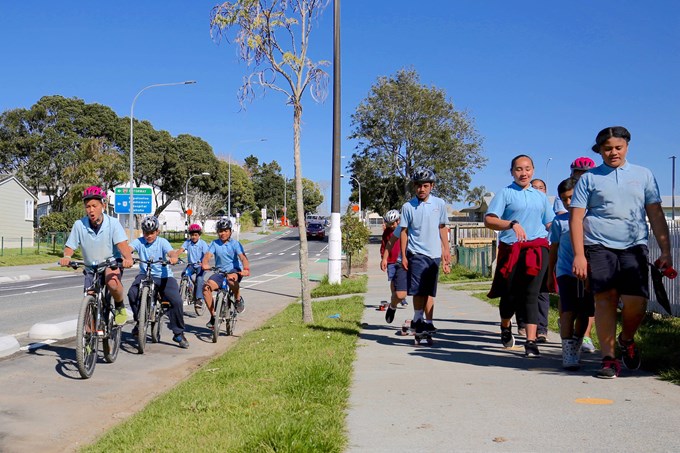Brake is a national road safety charity that works to prevent road deaths and injuries and make communities safer. They provide free support to families bereaved and injured in crashes. Visit brake.org.nz for more information.
Caroline Perry, NZ director at Brake, writes about the necessity of making our city's roads safer.
Every day we head off to work, to school; we go about our daily lives. We say goodbye to our loved ones and expect to see them again at the end of the day. And rightly so; luckily most of us will make it home safely.
But already this year, more than 150 people haven’t made it home because they were suddenly, violently and needlessly killed on our roads.
This week, like every other week, there will be more people who don’t make it home.
There will be more families who face an unexpected knock at the door from a police officer, come to tell them that the person they love most in the world won’t be coming home ever again.
The consequences of crashes are devastating. Working for Brake I have met and worked with many families who have been bereaved and injured in crashes. I know the shock, grief, trauma and bewilderment that result from crashes – the shockwaves that rip through families and communities. For the families involved, crashes are life-changing, the impacts long-lasting.
It frustrates me that there are people who continue to knowingly take risks on our roads, by speeding, driving impaired or not wearing a seat belt.
But there are others who simply make a mistake – a momentary lapse in attention, by misreading the road and pay for it with their life. We must build a transport system that allows for mistakes and minimises their impact.
Speed is a critical road safety issue. In the past, a lot of focus has been on speed as a cause of crashes i.e. drivers speeding or driving too fast for the conditions. It is still the case that speed is a causal factor in a significant proportion of deaths on our roads (26 per cent in 2017).
However, a significant number of deaths and serious injuries on our roads also occur below the speed limit, so we must question whether our speed limits are suitable for our roads.
What makes speed such a key issue is that it’s a factor in determining the outcome of all crashes.
The faster you’re travelling, the less time you have to respond to the unexpected, the bigger the impact in a crash, and the more likely you are to be killed or seriously injured.
Our fragile human bodies are not designed to withstand the forces involved in crashes. Many vehicles are not designed to withstand them, and even the newest, safest vehicles still can’t protect us completely in the high-speed crashes we see so frequently.
It is well-documented that in areas where high volumes of people on foot and bike mix with motorised vehicles (e.g. in town centres and outside schools), 30km/h is the maximum speed limit that should be set. We need lower speed limits on rural roads with no median barrier, where you have very little chance of surviving a head-on crash at 100km/h.
A report from the International Transport Forum last year looked at speed limit case studies from around the world. The pattern was the same in all cases: where speed limits were lowered, the number and severity of crashes decreased; where speeds were increased, so did the number and severity of crashes. Safe speed limits, that match the condition of the road, save lives.
It’s essential that we address the speeds on Auckland roads, with 30km/h in the city centre, town centres and around schools, and lower limits on our high-risk rural roads.
Brake supports a Vision Zero approach to road safety, and its key principle that human life and health cannot be exchanged for any other benefits within society. No death on our road is acceptable. Road crashes are preventable and can be stopped. Safe speed limits is a vital step in this approach.


